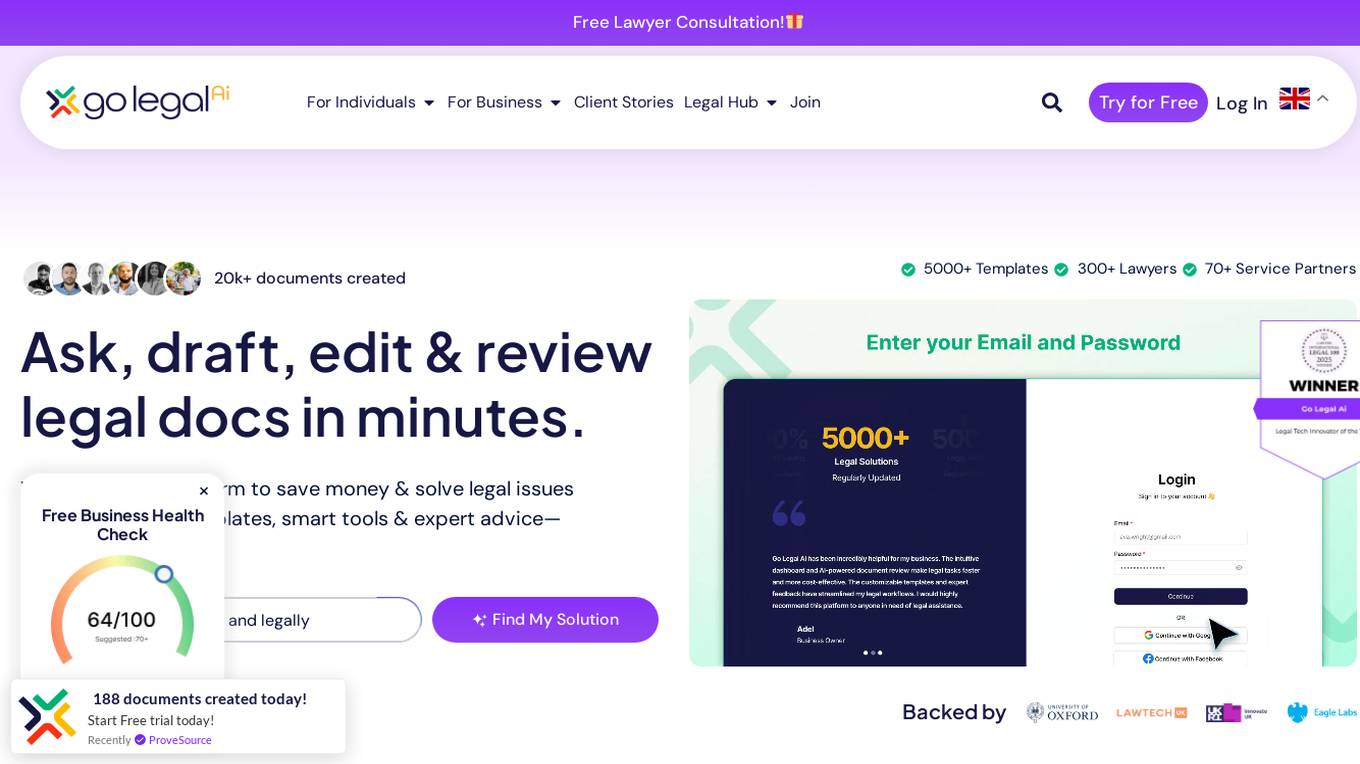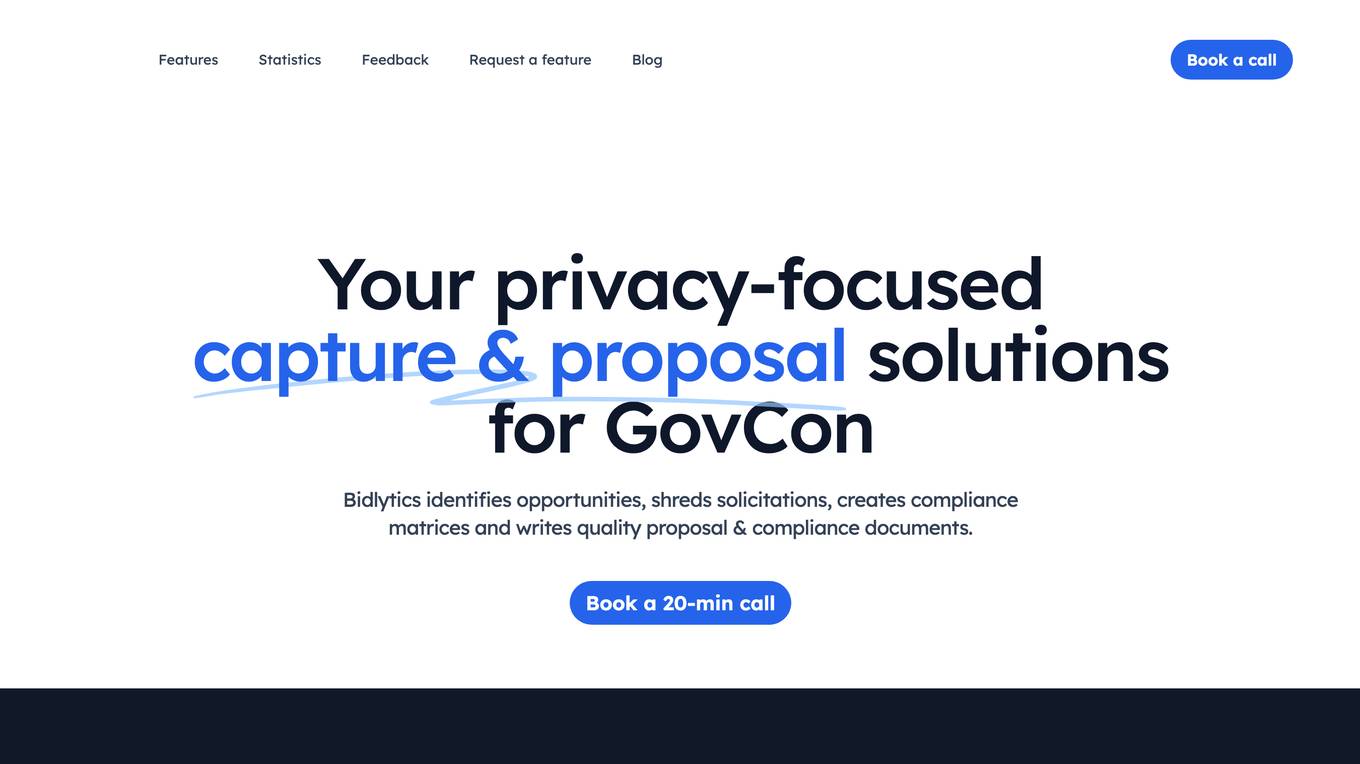Best AI tools for< Solicitor >
Infographic
2 - AI tool Sites

Go Legal AI
Go Legal AI is the UK's #1 Consumer Legal Tech Platform offering online legal services, support, and advice from top lawyers. The platform provides free lawyer consultations, generates legal documents 10x faster with award-winning Legal AI, reviews legal documents 90% faster, and offers expert advice from top lawyers and service providers at discounted rates. Users can get instant answers 24/7, collaborate and sign documents, monitor supply chain risks with instant alerts, and save money with exclusive deals from partners. The platform caters to both individuals and businesses, providing smart templates, risk & insolvency tracking, business health checks, legal insights, how-to guides, and glossaries.

Bidlytics
Bidlytics is a privacy-focused capture and proposal solution for Government Contracts (GovCon). It automates the process of identifying opportunities, analyzing solicitations, creating compliance matrices, and generating quality proposal and compliance documents. With enhanced privacy and security features, Bidlytics offers seamless bid discovery, automatic solicitation shredding, compliance matrix on autopilot, fast and accurate proposal generation, and continuous learning and optimization through AI-driven tools.

